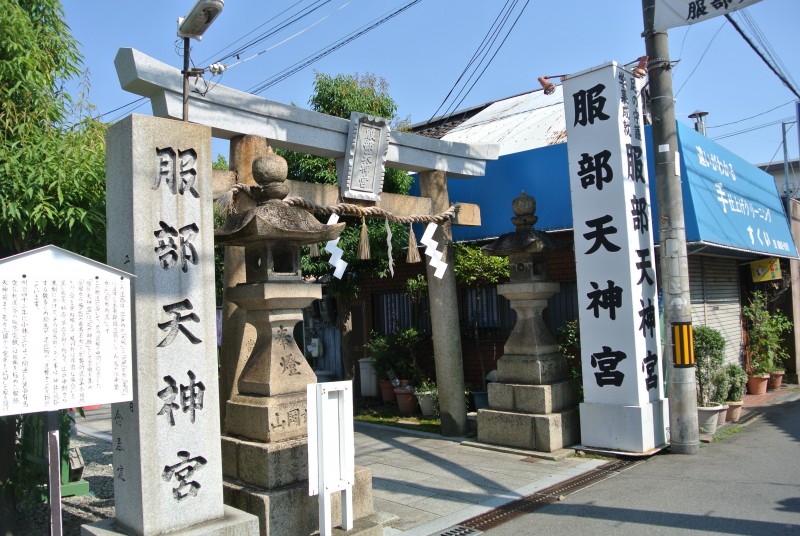
The ‘back entrance’ close to the Hankyu station gives access to a once flourishing and most intriguing shrine
It’s some time since I made an excursion to a new shrine, so I was intrigued to see what Hattori Tenjingu on the edge of Osaka had to offer. A surprising amount, was the answer. Packed into the small confines of the once expansive shrine are all manner of unusual features. And it has an intriguing history too.
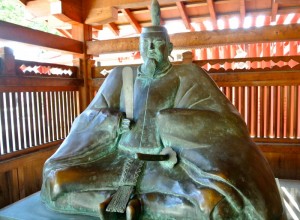
Sugawara no Michizane, whose spirit was deified as the kami Tenjin
The shrine owes the first part of its name to the Hata clan, who are closely associated with the introduction of weaving (Hata-ori). Green Shinto has written a series about their connection with Kyoto, and one presumes this shrine was one of their stopping points in the fifth century on their route inland from the Inland Sea (Osake Jinja on the coast also has strong Hata connections).
The second part of the shrine name, Tenjin, refers to the deified name of statesman, Sugawara no Michizane (845-903). He was unfairly expelled in 901 from Kyoto to Dazaifu in northern Kyushu, and early in the journey he suffered from a leg ailment and called in at this shrine to pray to the medicine kami, Sukunahikona no mikoto. Because he was healed, the shrine acquired a reputation for its curative and protective power in terms of legs which it has kept up to the present day.
There are panels at the shrine which show it in the past, and it’s quite plain from the bustling scenes that it once occupied a huge area and that it was a popular place for pilgrimage. Now the former Sando (approach path) consists of a shopping arcade, and the shrine’s outer reach is indicated by a sacred tree which is encased within the Hattori Tenjingu station on the Hankyu line, rising splendidly skywards from out of its roof.
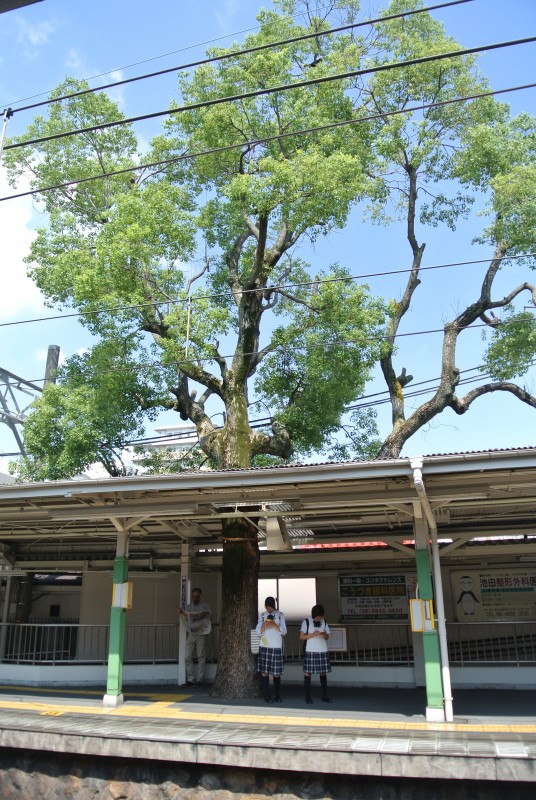
The first thing you see when arriving at the Hattori Tenjingu station (Hankyu line) is the sacred tree which stands on the Osaka-bound platform. Once it stood on the shrine’s grounds. Harmony of man and nature?
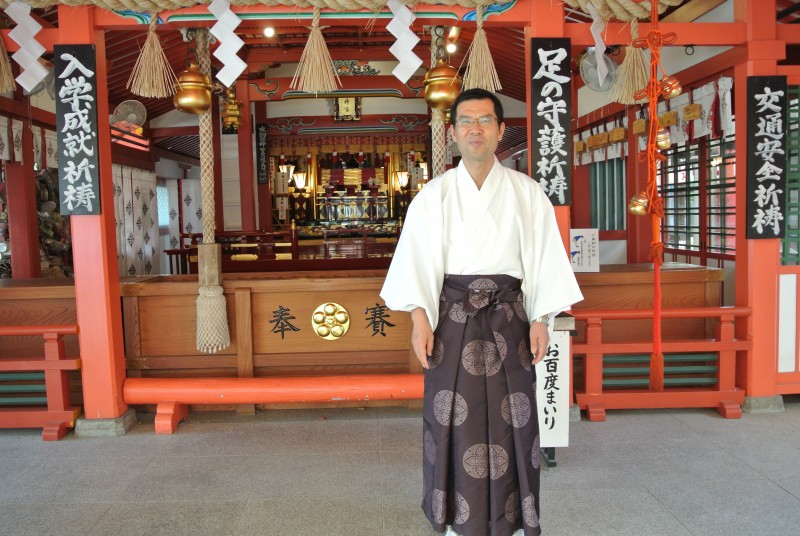
Kato san, head priest of the shrine for the past seventeen years, in front of the resplendent Worship Hall, repainted just three years ago
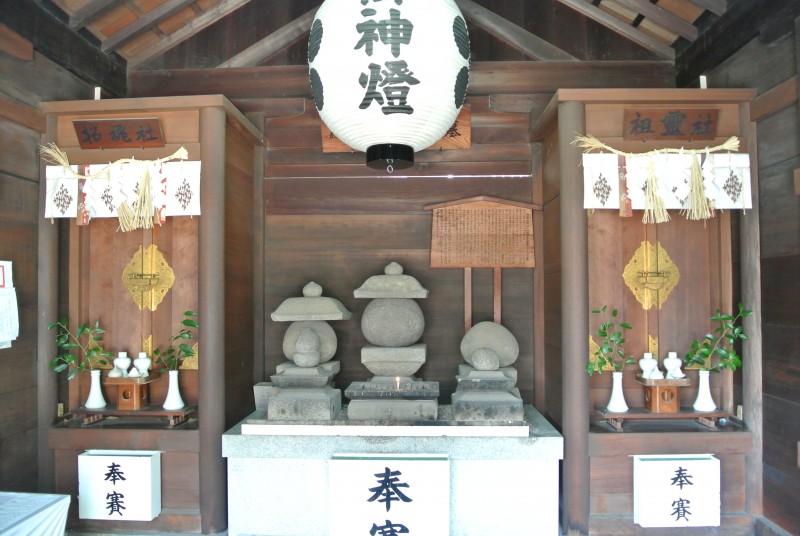
One unusual feature is a small building housing three gravestones (centre) with a spirit shelf for ancestral spirits (soreisha on the right) and one for the war dead (shoukonsha on the left). The gravestones may have acted as vehicles (yorishiro) into which spirits descended.
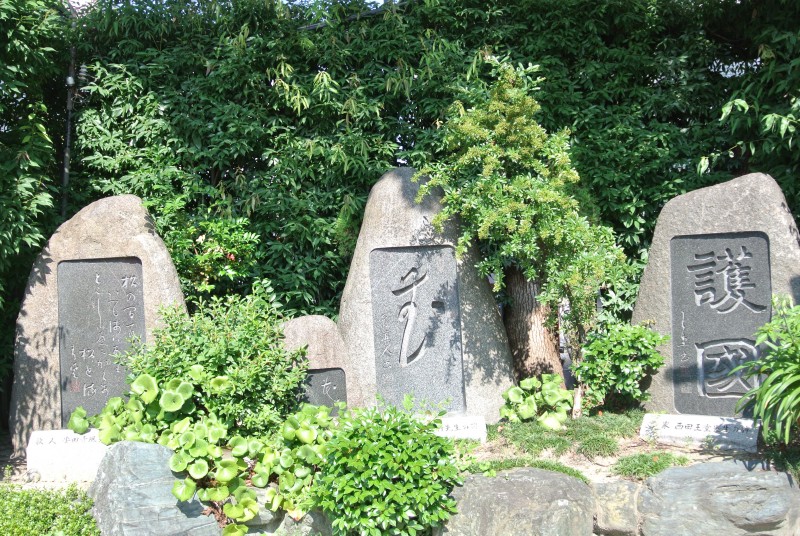
These three stone monuments represent notable talents of Sugawara no Michizane, of which he became a guardian deity: from left to right, poetry, painting and calligraphy. As with any Tenjin shrine, Hattori Tenjingu is associated with academic learning and students come here to pray for success in exams.
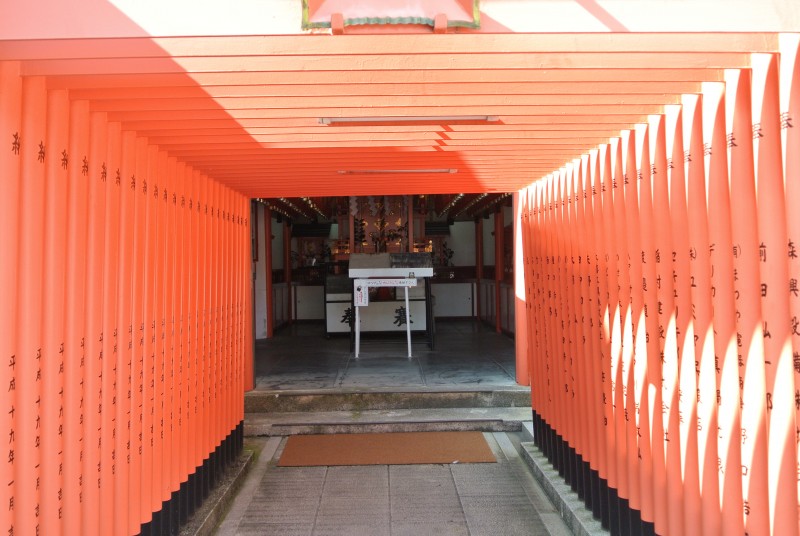
There’s an Inari subshrine, added by the present priest’s father some forty years ago, with a characteristic vermilion torii tunnel.
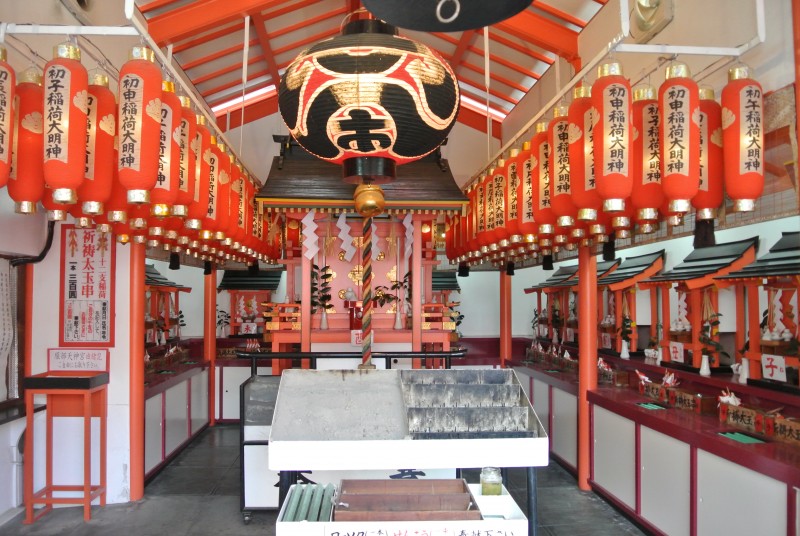
Inside the Inari shrine, unusually, are twelve small subshrines for each of the Chinese zodiac animals.
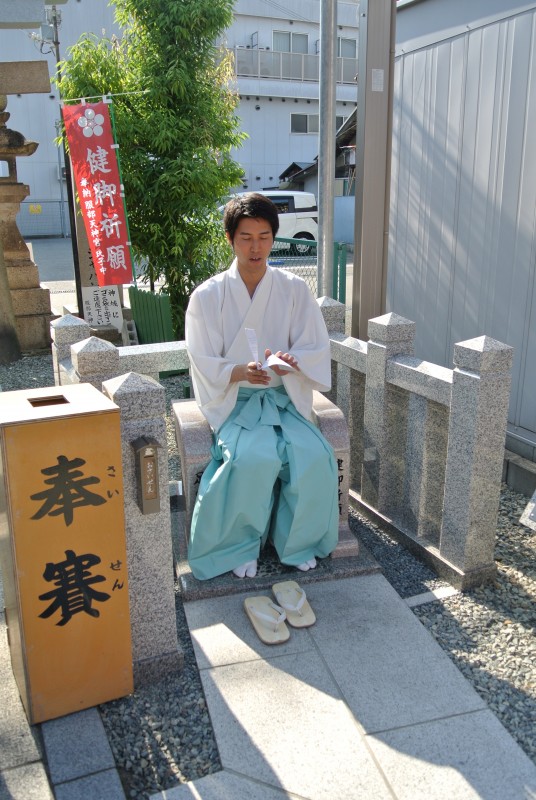
Taishi Kato, son of the head priest and now ‘gon-negi’ of the shrine, demonstrates how to sit in the special ‘leg protecting’ stone seat
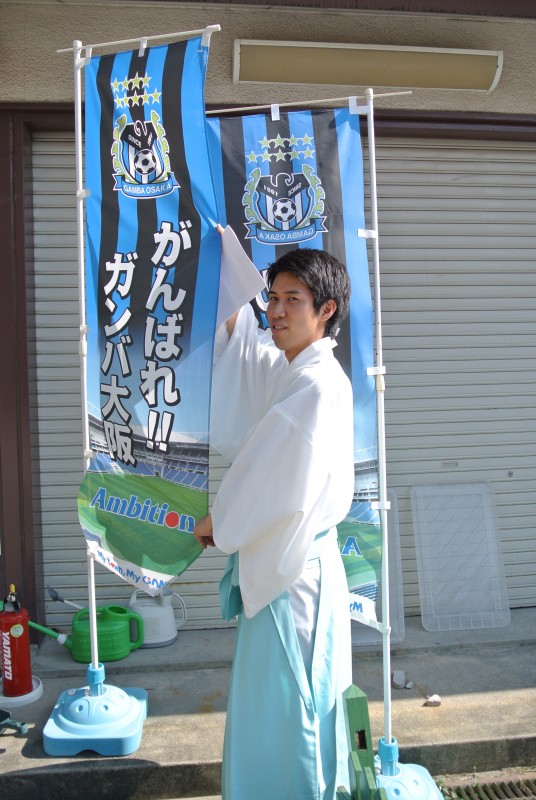
There’s a Gamba Osaka banner supporting the local football team, who patronise the shrine in order to protect their legs
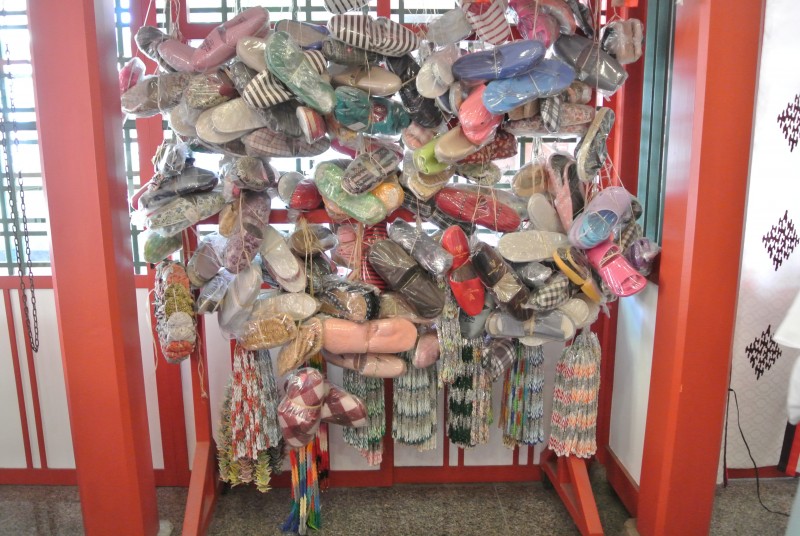
A sample of the many shoes left by worshippers in gratitude for the alleviation of leg and foot problems (there is a collection too of straw sandals dating back to Edo times).
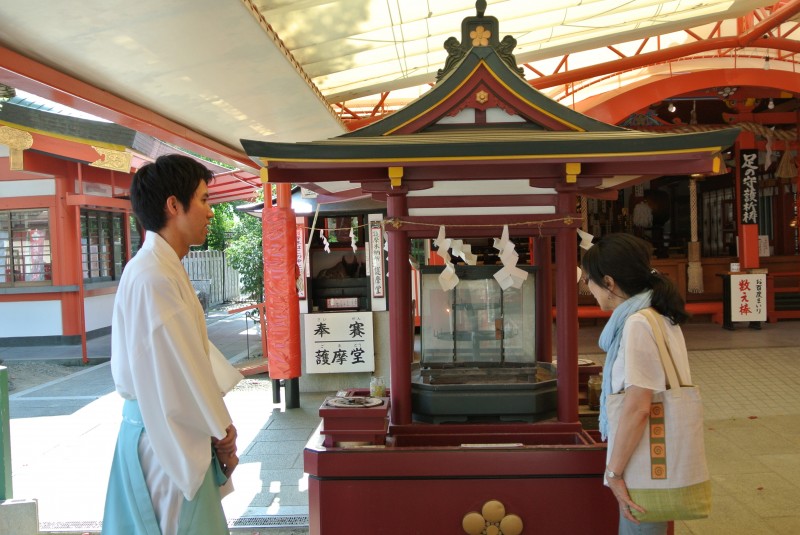
The young priest points out the large candle and incense holder in front of the Haiden. Incense holders are typically found at Buddhist temples and a relic from the syncretic practice of former times
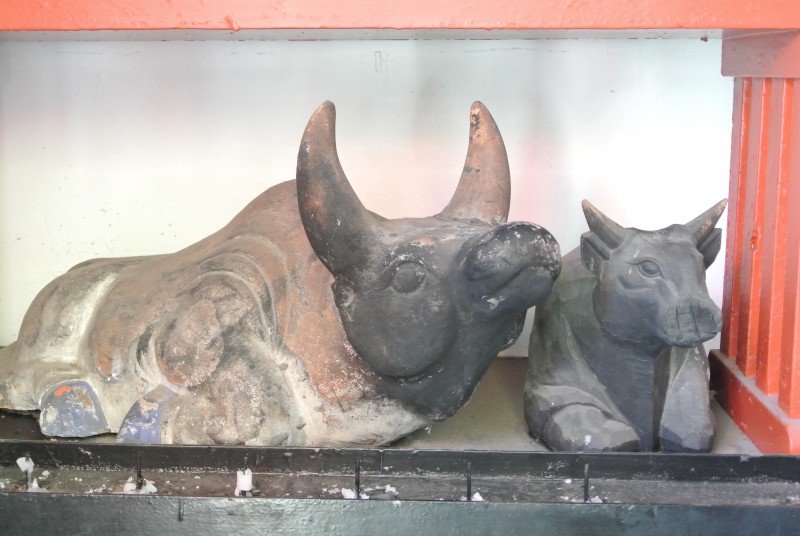
Tenjin shrines always feature an ox, the familiar of the kami, though this one unusually has a blackened face from the candles set before it
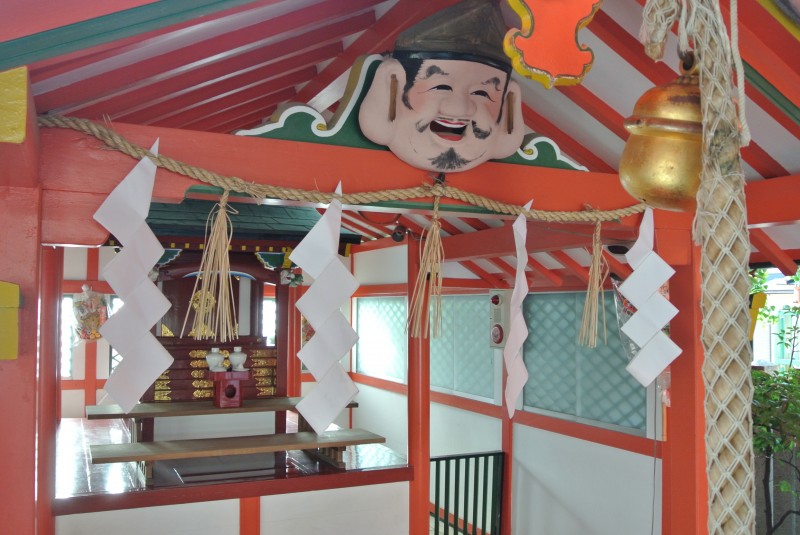
The present priest’s father, full of divine inspiration, carried out many ‘split spirit’ rites and created the large number of subshrines (known as ‘massha’) in the compound. This Ebisu shrine is a case in point, being a divided spirit from Nishinomiya Shrine. (Ebisu is the only indigenous kami of the Seven Lucky Deities.)
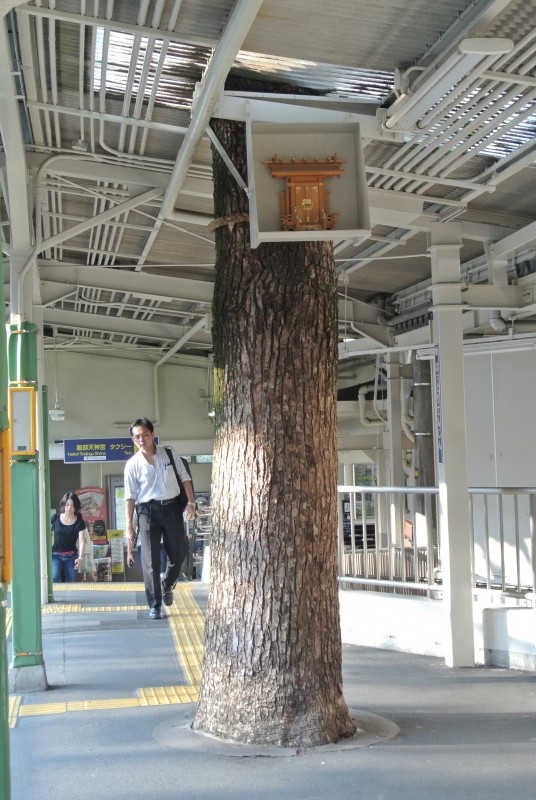
On departure, there’s time before the train comes to make a final prayer at the station’s ‘sacred tree’ (shinboku), saved from destruction through the entreaties of the local population

This looks like such a fantastic shrine! I love the subshrines and also how nature and man merged with the tree in the station. Gorgeous photos, thanks for sharing and I would love to visit this shrine when I go to Japan!
Kind of you to write in, and thanks for the thoughts. It’s not at all one of the more famous shrines, so I was surprised myself to find it so rich in history and subshrines. It clearly had a glorious past at one time, and amazingly it seems that it can trace worship at the site back to the fifth century. Since it’s close to the railway station with its unique sacred tree, I can indeed heartily recommend a visit to this off the beaten track shrine.
Cool, enjoyed that, Hugo
Always cheers me up to read about these shrines. All very intriguing and makes me want to go back to Japan and learn more about Shinto. Which I will to do the Shikoku pilgrimage and climb some mountains if my fate permits. Again the blend of the beautiful and elegant and the popular and rather garish in Japanese culture strikes me. Phinella
Thank you for the feedback, Phinella, and I hope that you’ll enjoy your pilgrimage and mountaineering. You’re sure to come across some intriguing Shinto shrines on your walks, and as you say there’s always something intriguing and insightful about Japanese culture and history to be explored…
Thanks Hugo… Kyoto Dreams is motivating me to try and up my photo quality!
I did not imagine Hata clan can be combined with
Hattori. I have got it!
Though I know a station which is on ruins of
a castle, the station with the tree shows
us an image of living in harmony with nature.
Good day, Ota san. Thank you for the message. I was not so sure about ‘harmony with nature’, when the tree is encased in concrete. Traditional Japanese buildings, being made of perishable materials, were far more in keeping with their surrounds. But in this case since the tree is flourishing and the station is clearly built to accommodate it, I suppose that we can legitimately talk of harmony. It would be nice if commuters hugged the tree while waiting, but sadly they simply ignore it!!